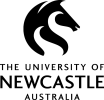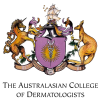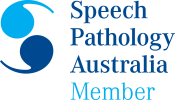A dozen lawyers stood together to be sworn into the Supreme Court bar Tuesday morning and mark a momentous occasion. Chief Justice John G. Roberts Jr. made a sweeping motion with his hands, which translated in Sign Language to “Your motion is granted.” The Chief Justice learned to sign that particular phrase just for that occasion. The gesture marked a historical moment where 12 deaf and hard of hearing lawyers were admitted into the Supreme Court Bar. All 12 lawyers are members of the Deaf and Hard of Hearing Bar Association from different states in America. They hope they’ll inspire other deaf students to pursue a legal career. They were not the first deaf lawyers to be admitted. In 1982, Michael Chatoff was the first deaf person to argue before the Supreme Court using technology that transcribed the justices’ questions for him.
Among them was New York-based Teresa Curtin. For her first 20 years practicing law, Curtin said she would often have to explain to judges that she was not the defendant. She’d explain time and again that she was the lawyer and that the interpreter she brought was there to sign for her, not her client. “It hasn’t been easy,” Curtin said. I think the biggest challenge has been to get people to give me the opportunity.
When Curtin was studying at Princeton University during her undergraduate degree, she learnt by copying the notes from her peers. Then by the time she started at New York University Law School, she had a sign language interpreter in class allowing her to fully engage in the classroom. There were only a handful of deaf lawyers at the time she graduated in 1988. Today there are roughly 250 deaf or hard-of-hearing people practicing law in the United States. The 12 lawyers admitted on this occasion
We’re very proud to be here today because its about diversity,” Curtin said, who now works at Weitz & Luxenberg, a large firm in New York. We don’t think it’s so much inspirational as it should be normal. While two interpreters were there Tuesday to sign the entire morning’s opinions and arguments for the group — including an arcane and complicated opinion on energy regulations read by Justice Ruth Bader Ginsburg — most were able to follow along without them. Many sat with their heads down, reading along on their mobile devices that were providing them real-time transcripts of the proceedings. Though technology remains forbidden inside the courtroom, they were granted the rare exception.
Advancements in technology along with the American Disabilities Act in 1990, which states that “reasonable accommodations” be made for people with disabilities, has allowed lawyers that are deaf or hard of hearing to practice with greater ease. However, there are still barriers with one fear being that having an interpreter present may mean their message may not be presented accurately.
Some deaf or hard-of-hearing lawyers doubt that they can actually practice law, said Howard Rosenblum, who also was sworn in to the bar. But the real practice is based on intellect and deaf people have that in spades.
Reference
www.washingtonpost.com/supreme-court-chief-justice-learned-sign-language-to-swear-in-deaf-attorneys
The post Supreme Court Chief Justice learned sign language to swear in deaf lawyers appeared first on ENT Wellbeing Sydney.










